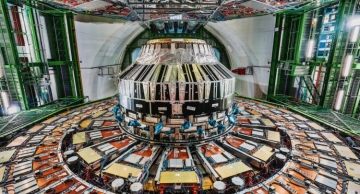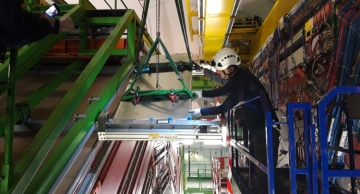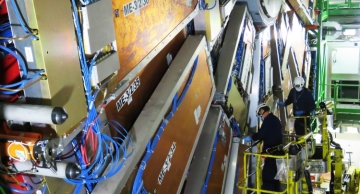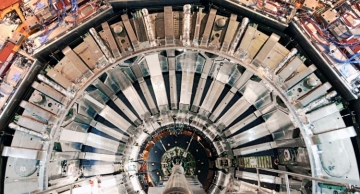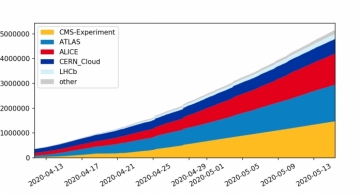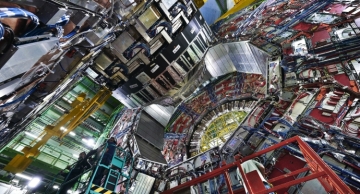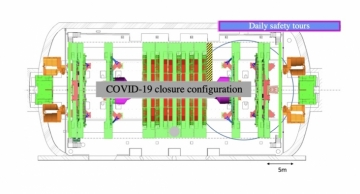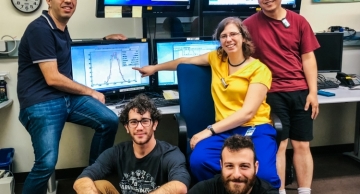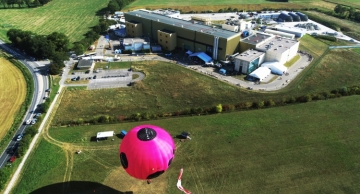The year 2020 is coming to an end; despite its exceptional difficulties and challenges caused by the world-wide COVID-19 pandemic, the CMS collaboration reached many important milestones during this period. This overview gives a brief glimpse…
CMS has just finished wrapping the barrel with a new layer which is not a new detector but a brand new protection system aimed to keep the outer barrel muon chambers shielded from background radiation present in the experimental cavern during…
Despite the rather challenging circumstances of the COVID-19 pandemic, the CMS GEM (Gas Electron Multiplier) team has been working against all odds to complete the installation of the very first GEM station (GE1/1) in CMS. With the completion of one…
Since late May, with the incremental re-opening of CERN’s facilities, members of the CMS GEM project have been hard at work restarting the laboratory activities in preparation for the continued efforts towards the GE1/1 chambers installation. Made…
The Compact Muon Solenoid (CMS) Muon System is undergoing major upgrades during Long Shutdown 2 (LS2), preparing for the High Luminosity LHC (HL-LHC). The Large Hadron Collider will be upgraded to significantly increase the luminosity (frequency of…
The CMS magnet, one of the largest superconducting magnets in the world, with the largest stored energy, has been warmed up in April-May 2020 in order to perform an intervention on the vacuum pumping system.
The magnet is a 220-ton cylinder cooled…
The COVID-19 pandemic is having widespread impacts close to home and around the world. COVID-19 will certainly change the way the CMS collaboration will function as an experiment. Vast portions our research depend on global interactions to be…
Immediately after CMS was brought into a safe state on 18 March, planning for a controlled restart began, with the objective of protecting all people working at the CMS Experiment site (Point 5, P5) as effectively as reasonably possible. Physical…
During the early months of 2020, as the COVID-19 threat increased, CMS activity was adapted to gradually transfer responsibility to locally resident collaborators. LS2 work was accelerated in the experimental hall, so as to reach a critical LS2…
When the LHC is sending billions of protons at each other millions of times per second, it’s important to know just how many of them actually are colliding, both so that the LHC can optimize its operations to produce the most collisions possible,…
Soon after 2027, the LHC will enter the high luminosity era, known as HL-LHC, during which it is expected to deliver about 20 times more data than delivered up the end of Run 2.
In order to achieve such high luminosity, the LHC is going to use…
2019 is approaching its end with it the first year of the LHC Long Shutdown 2 (LS2),a break that focuses on the upgrade and maintenance of the LHC. It’s been twelve intense months for the growing CMS collaboration that counts 53 member countries.…

